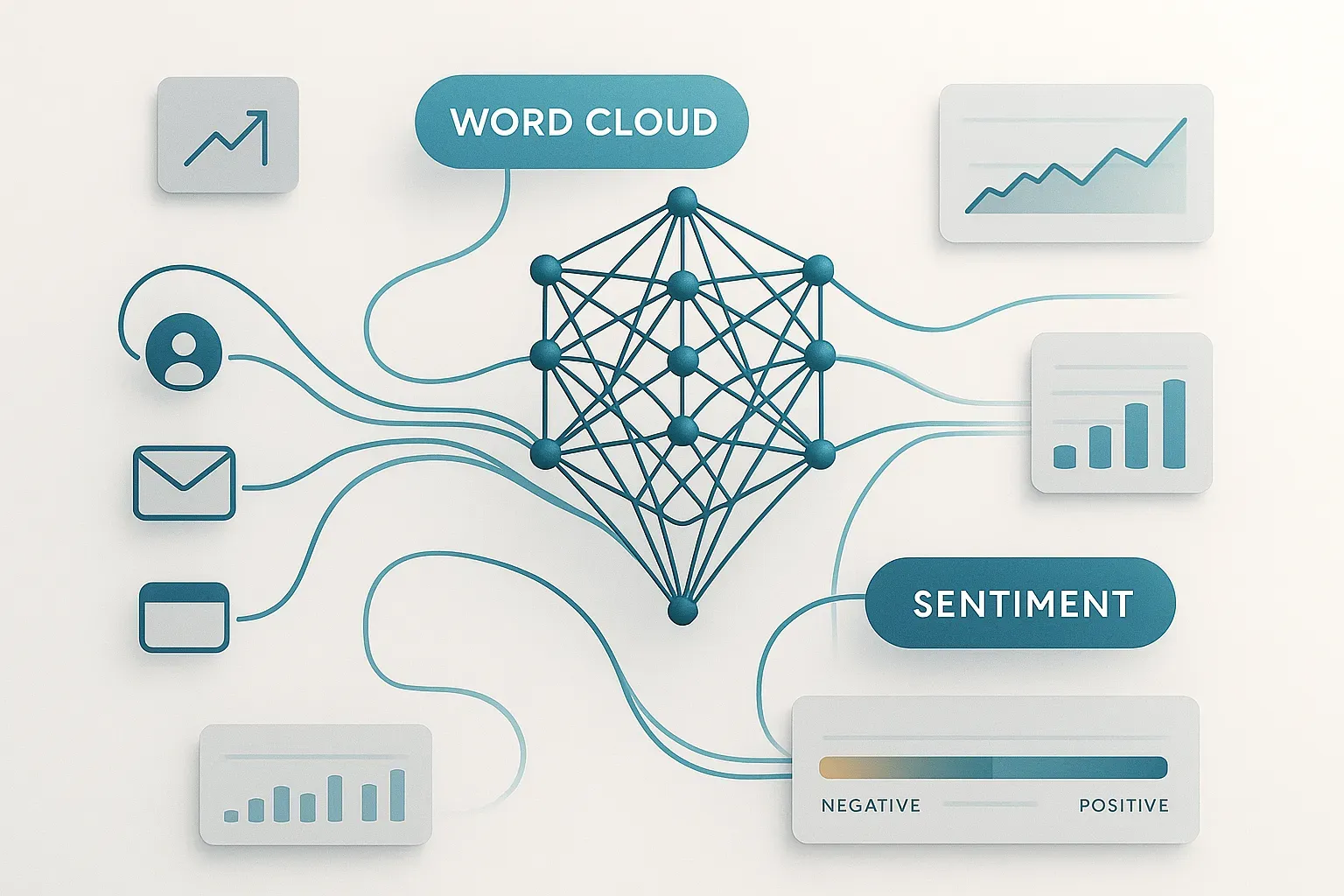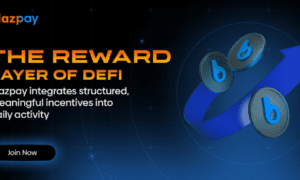Natural Language Processing in Digital Marketing: Success Stories
Natural language processing is transforming digital marketing with measurable results across industries, as demonstrated in this collection of success stories. Leading experts share how AI-powered tools are revolutionizing everything from content creation to customer engagement through semantic search, emotional analysis, and personalized communication. These practical case studies reveal how marketers are achieving significant improvements in efficiency, conversions, and customer relationships through strategic implementation of NLP technologies.
- Empathetic Chatbots Make Customer Interactions Feel Human
- Sentiment-Driven Content Repurposing Extends Asset Lifespan
- Dynamic Semantic Clustering Identifies High-Value Content Gaps
- Intent-Driven Content Matches User Language and Motivation
- Semantic Search Framework Beats Traditional Keyword Placement
- Review Analysis Reveals Critical Customer Pain Points
- Emotional Intent Analysis Transforms User Engagement
- Context-Led Marketing Creates Trust Through Conversation
- Voice Search Analysis Drives Qualified Leads
- Custom AI Models Reflect Brand Voice Values
- NLP Aligns Content With Real Human Intent
- Real-Time Sentiment Analysis Transforms Lead Qualification
- Intent-Based Ad Copy Cuts Acquisition Costs
- AI Tools Boost Research and Drafting Efficiency
- LLM Agents Streamline Affiliate Marketing Process
- Authentic Tone Matches How Target Audiences Speak
- Personalized Pitches Match Each Journalist’s Style
- Human-Enhanced AI Descriptions Boost Marketplace Performance
Empathetic Chatbots Make Customer Interactions Feel Human
One of the most innovative ways I have used natural language processing in digital marketing was to make customer interactions feel more human. I helped design an intelligent chatbot that could understand not only what people said but also how they felt. By analyzing tone and word choice, the chatbot learned to respond in a friendlier and more empathetic way.
This made conversations flow naturally and helped customers feel genuinely heard and supported. I also used NLP to guide content creation by studying what customers were saying online. By looking at reviews and social media comments, I could see the exact words and emotions people used when talking about products. That insight shaped messages that spoke directly to their interests and needs, making the content more authentic and relatable.
The results were inspiring. Customer satisfaction went up, response times went down, and engagement with content became stronger. NLP helped bridge the gap between data and emotion, allowing marketing to feel less robotic and more like a real conversation. It reminded me that the best digital strategies still come down to understanding people and connecting with them in a genuine way.

Sentiment-Driven Content Repurposing Extends Asset Lifespan
The most innovative use of NLP in our digital marketing has been our sentiment-driven content repurposing engine. Instead of simply analyzing keywords, we built a system that identifies the emotional hooks — frustration, aspiration, curiosity — that make content resonate within specific communities.
When we published a blog about overcoming technical debt, our NLP analysis revealed something fascinating: readers weren’t just engaging with technical solutions but connecting deeply with the emotional stories of project stress. Using this insight, we automatically transformed sections of that content into format-specific assets: relatable meme graphics for Reddit users, an authentic founder story for our LinkedIn audience, and a practical troubleshooting checklist for our email campaigns.
This emotionally intelligent approach to content repurposing delivered remarkable results. We saw a 40% increase in organic engagement from existing content. The average lifespan of our content extended by 300%. Most importantly, these recycled assets drove a 28% uplift in qualified lead generation — proving that understanding the emotional context behind engagement creates significantly more effective marketing materials than traditional content optimization.

Dynamic Semantic Clustering Identifies High-Value Content Gaps
The most innovative use of Natural Language Processing (NLP) we implemented wasn’t for simple content generation, but for dynamically identifying and prioritizing high-value, unaddressed content gaps based on evolving user search intent and our existing content coverage.
Conventional SEO gap analysis is often static: you compare keywords you rank for against competitors and then manually group them. Our approach utilized a custom-built NLP model to go far deeper, allowing us to pivot our content strategy in real-time.
How It Works and Impacted Results
Semantic Clustering (The Innovation): We fed our entire organic search query history (millions of data points), alongside all indexed content from our top 5 competitors, into the NLP model. The model used techniques like BERT to understand the semantic intent behind the queries, clustering them into “Super-Topics” rather than simple keywords. For example, queries like “software to track employee hours,” “best time tracking app,” and “hourly worker management solution” were clustered into the singular intent: “Enterprise Time Management.”
Dynamic Gap Identification: The model then compared our existing content against these Super-Topics. It generated a “Topical Authority Score” for our domain for each Super-Topic. The innovation was flagging topics where competitor content was strong, but our content was semantically weak — meaning we had content that mentioned the topic but didn’t provide comprehensive, intent-matching answers. This showed us exactly where to invest our content resources for maximum authority lift.
The Impact on Results: This NLP-driven approach allowed us to shift our content investment from low-impact content (simply rewriting competitor articles) to high-impact, authority-building content.
Traffic Quality: We saw a 45% reduction in users quickly leaving our site on the newly optimized Super-Topic pages, indicating a much better content-to-intent match.
SEO Performance: Within nine months, the average ranking of our target Super-Topics improved by 11 positions, leading to a 30% increase in qualified organic traffic for those high-intent themes.
In essence, we used NLP to move beyond keyword research and into intent research, ensuring every new piece of content directly addressed a high-value, unaddressed semantic need — a tactic that fundamentally restructured our content investment and provided outsized returns.

Intent-Driven Content Matches User Language and Motivation
The most innovative use of NLP we’ve implemented was intent-driven content clustering for a UK-based SaaS client in the logistics sector. Instead of relying solely on keyword volume, we used NLP models to analyze customer support transcripts, reviews, and search queries to uncover recurring pain points and phrasing. This helped us group topics by intent, like “optimize delivery routes” vs. “reduce shipping costs,” and build content clusters that directly matched user language and motivation.
The result was a 46% increase in organic traffic within four months and a noticeable rise in demo requests from long-tail, solution-aware searches. NLP gave us precision, helping content speak the customer’s language while signaling strong topical relevance to search engines.

Semantic Search Framework Beats Traditional Keyword Placement
One of the most impactful ways I’ve used natural language processing in digital marketing is to power SEO content frameworks that align more tightly with semantic search. Instead of focusing solely on keyword placement, I’ve leveraged NLP tools to identify topical clusters, latent semantic keywords, and user intent signals based on how people actually phrase their questions online. This has helped shape content that doesn’t just rank, but answers real user needs. By structuring articles to reflect searcher context and natural phrasing, we’ve seen time on page increase, bounce rates drop, and rankings climb for competitive terms.
In one campaign, I used NLP tools to analyze hundreds of FAQs, Reddit threads, and forum discussions related to vehicle financing. From there, we built a high-conversion blog series that mirrored how users talked about pain points, not just how they typed in keywords. We saw a 38 percent lift in organic click-through rate and the pages consistently outranked competitors who were still relying on keyword-stuffed content. Modern SEO isn’t just about what people search for but how they talk when they do. When content sounds like the customer and solves like a human, search engines take notice.

Review Analysis Reveals Critical Customer Pain Points
One of the most innovative ways we’ve applied NLP is by using it to analyze customer reviews at scale. Instead of just counting stars, we process the language to find recurring pain points and sentiment patterns. For one client in Canberra, NLP revealed that customers often mentioned “slow response time,” even in positive reviews. We turned that insight into a campaign highlighting their new 24/7 support. The result was a sharp increase in click-through rates for local ads. This happened because the messaging spoke directly to what people were saying.

Emotional Intent Analysis Transforms User Engagement
We started using natural language processing out of curiosity, not automation. Traditional keyword tools gave us lists of phrases, but they couldn’t explain why people searched the way they did. So we built a simple NLP workflow that analyzed real user queries, studying verbs, tone, and sentence structure to understand intent more deeply. The goal was to read between the lines and capture the emotion behind the search.
In one campaign for an e-commerce client, we noticed a pattern of frustration in how people phrased their questions. Words like “finally,” “easily,” and “without stress” kept showing up. It became clear that users weren’t just looking for information; they were looking for relief. We adjusted the content, rewriting it in a more conversational and reassuring way. Within two months, engagement time nearly doubled and bounce rates dropped sharply.
That experience changed the way I see SEO. NLP helped us stop writing for algorithms and start writing for people. It reminded me that behind every keyword, there’s a human story, and that’s what truly drives results.
Context-Led Marketing Creates Trust Through Conversation
For me, the most innovative use of natural language processing in digital marketing hasn’t been about replacing human creativity, but about augmenting it at scale. We’ve harnessed NLP to listen as much as we speak — analyzing intent, sentiment, and even cultural nuance in the way people engage with brands. That understanding allows us to generate outreach and campaigns that don’t just land in an inbox but resonate like a conversation you were already having.
The real transformation has been strategic: NLP has shifted marketing from being campaign-led to being context-led. Instead of pushing messages out, we now create a dynamic loop where language itself becomes data — teaching us what people care about in real time. The result is not just higher open rates or faster lead conversions, but something deeper: trust. When technology helps you sound more human, the brand stops feeling like a broadcast and starts feeling like a relationship.

Voice Search Analysis Drives Qualified Leads
We’ve used it in voice search optimization for our clients. Since voice assistants have become part of daily life for the majority of people, we found that analyzing natural, long-form voice queries to understand how customers actually ask for services was key to ranking better. The insight we gained helped us tailor website content, SEO strategies, and FAQs to align with how people really speak. It’s what allowed our clients to rank for highly-specific, high-intent searches which helped drive stronger qualified leads.

Custom AI Models Reflect Brand Voice Values
Our most innovative NLP application has been creating custom AI models specifically tailored to each client’s brand voice, values, and mission for content creation. These personalized models help transform complex technical information into relatable customer experiences, particularly for our fintech and SaaS clients. The results have been remarkable, with sales teams reporting significantly warmer discovery interactions and users developing stronger emotional connections with previously technical brands. This strategic approach maintains content quality while ensuring perfect alignment with brand positioning and key marketing objectives.

NLP Aligns Content With Real Human Intent
One of the most innovative uses of natural language processing I’ve implemented in digital marketing was for content optimization and intent analysis. I used NLP to understand how users express their needs and questions across different stages of the buyer journey. This helped me create content that was not only SEO-friendly but also aligned with real human intent.
I worked on a project where a client’s blog was getting good traffic but very few conversions. Traditional keyword targeting wasn’t enough because people were visiting the site but not finding exactly what they needed. I started using NLP-based tools like Google Natural Language API and Surfer SEO’s NLP feature to analyze the language patterns used by top-performing competitor pages. This helped identify which entities, attributes, and relationships Google associated with the topic.
For example, while optimizing a page about logistics software, NLP showed that users weren’t just searching for software features. They were also expressing pain points such as delivery delays, supply chain visibility, and inventory forecasting. I restructured the content around these intent-based themes and included FAQs that directly addressed those problems. The content felt more natural and useful rather than keyword-focused.
The change made a noticeable impact. Within six weeks, organic traffic increased by around 40 percent. Users spent more time on the page, and the bounce rate dropped significantly. Most importantly, conversions improved because the content started speaking to real user needs rather than just search engine algorithms.
I also applied NLP to improve ad copy and email campaigns. By analyzing the tone and sentiment of high-performing content, I adjusted messaging to match different audience emotions. This resulted in higher click-through and engagement rates across campaigns.
The best part of using NLP was how it shifted the approach from chasing keywords to understanding meaning. It allowed me to connect more deeply with the audience by writing content that reflected how people actually think and communicate. In the end, NLP became less of a technical tool and more of a creative assistant that helped deliver content that performed better and felt more human.

Real-Time Sentiment Analysis Transforms Lead Qualification
Real-time sentiment analysis on client intake conversations completely changed how we qualify leads.
When potential clients fill out our requirement forms or chat with our pre-sales team, our NLP engine analyzes not just what they’re saying, but how they’re saying it. Sentiment analysis enables businesses to extract valuable information from significant volumes of consumer input quickly and at scale, and we took that principle to the extreme.
We trained a custom NLP model that processes client conversations in real-time — detecting urgency markers (“need this ASAP,” “deadline next week”), budget anxiety (“not sure about pricing,” “trying to stay lean”), and confidence signals (“we’ve done this before,” “scaling our team”). This technology turns unstructured data into powerful, actionable insights.
The system assigns sentiment scores and automatically triggers different engagement workflows. A frustrated client who mentions “last agency ghosted us” gets routed to our senior account manager within 15 minutes. Someone expressing budget concerns receives case studies showing ROI, not sales pitches.
The results were shocking:
Our lead-to-client conversion jumped 34% in the first quarter. Why? Because we stopped treating all inquiries the same. High-urgency leads got immediate attention. Hesitant leads got nurturing sequences with success stories matching their concerns.
Even better, our marketing content strategy transformed. We analyzed thousands of client conversations to identify recurring pain points and exact phrases they used. Brands are using sentiment analysis to gauge public opinion and tailor their marketing strategies accordingly. We rewrote our landing pages, email campaigns, and ad copy using their actual language — not marketing jargon.
Clients kept saying they were “burned by cheap freelancers” and “worried about quality.” We launched a targeted campaign addressing exactly that fear, using their words. That campaign alone generated 2.3x ROI compared to our generic messaging.
Our sales team became mind-readers. They’d enter calls already knowing the prospect’s concerns, urgency level, and decision-making style. Conversations became consultative instead of exploratory.
The ability to analyze massive amounts of data in real time has helped businesses streamline workflows and improve customer experiences. That’s exactly what happened — we stopped guessing and started responding to actual emotional signals.

Intent-Based Ad Copy Cuts Acquisition Costs
The most effective way I used NLP was to rewrite ad copy for different segments. I pulled in past campaign data and used it to create variations that matched how people naturally spoke and searched. This resulted in CTR increasing by around 20% on some ads, and CAC dropping by about 15% in certain campaigns. This happened because the copy felt more relevant without me needing to draft every version by hand.
I also used NLP to group keywords by intent instead of chasing a long list one by one. When I built content around those groups, it eliminated wasted drafts and helped service pages rank faster. One page that was stuck near the bottom of page two moved up to page one within a couple of months after I reworked it using those intent groups.
The biggest change was efficiency. Work that used to take weeks of writing, editing, and optimizing came together in days. This gave me room to launch more campaigns, test faster, and double the output without losing quality.

AI Tools Boost Research and Drafting Efficiency
We use NLP tools like ChatGPT and Claude to speed up research and drafting, cutting work time by about 25-30%. It also made onboarding new writers faster and took boring, repetitive tasks off the team’s plate — which lifted both output and morale.

LLM Agents Streamline Affiliate Marketing Process
For affiliate marketing, one of the most daunting and time-consuming activities for our marketing team is sorting through thousands of affiliate prospects and identifying a list of possible matches to reach out to. First, it takes hours and hours to read through each affiliate’s expertise, background, and user/engagement numbers. Second, there’s no way you can craft an individual message to each affiliate, and everyone hates form letters. Third, there’s no guarantee that people you invite to your program will even accept your invitation (or actually perform if they do), so it’s a time-consuming task that may actually have zero ROI.
Enter: LLMs. Now, we have an LLM agent sort through all the tens of thousands of possible affiliates, create a spreadsheet of all the best ones to reach out to, and create an invitation message specifically crafted for each affiliate. Then, once we invite those affiliates, for the ones that accept, we send them a specifically crafted “Welcome!” message (made by AI based on its research) that has all the most relevant information and a bunch of ideas to promote our resume builder to their specific audience and channels.

Authentic Tone Matches How Target Audiences Speak
I’ve tested with Meta Ads which tone of voice works best to engage our audience and increase conversion, and the guiding principle that works time and time again is to write your ad how your ICP speaks. If you’re advertising to stay-at-home moms in an affluent neighborhood, then write how they speak. Write in a tone and voice that they’d naturally come across in their social media feed. Natural language processing can help get your ad copy into the right tone so it resonates better with your target audience. In this AI world we’re living in, people resonate with authenticity. Give it to them.

Personalized Pitches Match Each Journalist’s Style
I often use natural language processing to draft unique and client-specific outreach pitches (based on each journalist’s style and tone). This way it creates accurate pitches and not generic responses.
By making small tweaks, the write-ups became more personal and relatable. The result? Reply rates went up noticeably. Above all, NLP handled the heavy lifting for analyzing tone, while I focused on crafting the perfect hook.

Human-Enhanced AI Descriptions Boost Marketplace Performance
Our team implemented natural language processing to generate product descriptions across our Amazon and Walmart Marketplace listings, which resulted in a 22% increase in organic impressions. We quickly learned that the AI-written content required human enhancement, particularly adding personal stories for collectible items to create emotional connections with potential buyers. This hybrid approach ultimately delivered an 8% higher average order value and increased the time customers spent on our product pages by 12%.

Related Articles
- The Future of E-commerce Marketing: AI-Driven Solutions
- How AI-Powered SEO Strategies Shape Digital Success in 2025




































